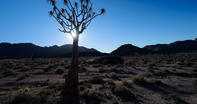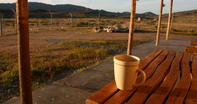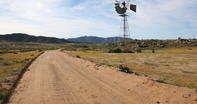A Concept of Paper
The other major conservation area in the Richtersveld is the Richtersveld Community Conservancy (RCC). This entity began life as a concept paper in 1998 and evolved hand in hand with the World Heritage application process.

It was supported by various international and local heritage agencies (such as the NORAD – the Norwegian Agency for Development Cooperation, the Northern Cape Department of Arts and Culture and Eco-Africa environmental consultants).
Through extensive workshops and consultations, the conservancy concept firmed up as part of a wider Integrated Development Planning process for the region.
The community thus got behind the idea of creating a heritage area where natural and cultural resources would be protected under a policy of sustainable development. Various management plans were drawn up and, in 2004, a management committee was elected with a full-time conservancy manager and administrative officer. The headquarters of the RCC are in Eksteenfontein.
A Remarkable Place

In 2005, the Department of Environmental Affairs and Tourism (DEAT) coughed up R6 million to help the conservancy develop infrastructure and accommodation. The Northern Cape provincial administration also started negotiations to hand over the adjacent (and wholly undeveloped) Helskloof reserve to the conservancy.
Today, the Richtersveld Community Conservancy (RCC) is a remarkable place. It is a biological reserve dedicated to biodiversity conservation and plans are in place to establish a scientific research station. But it is also a cultural reserve where ancient human traditions are protected and encouraged to resume their previous vitality.
A Double-Edged Sword

Unfortunately, tourism is a double-edged sword. The ecosystem in the Richtersveld Community Conservancy and the Richtersveld National Park is fragile. It is already under threat from overgrazing and other environmental factors, and uncontrolled tourism could make matters worse.
The thing is, tourists are (by their very nature) destructive beasts. Their feet trample delicate plants, their cars (if driven irresponsibly) can scar the landscape, and their mere presence in a village can corrupt the cultural traditions that attracted them in the first place.
So, all new tourism initiatives in the Richtersveld are being carefully planned and monitored so that the tourist cash cow doesn’t kill the ecological golden goose. In other words, all the stakeholders in the region are working together to make sure that tourism and development strategies are being implemented in a responsible and sustainable manner.
And, after speaking to some of the people involved in this initiative, I am confident that they will succeed in their very valuable endeavours.
By David Fleminger